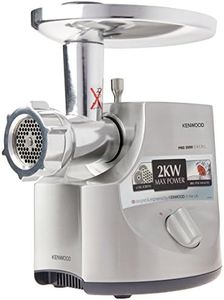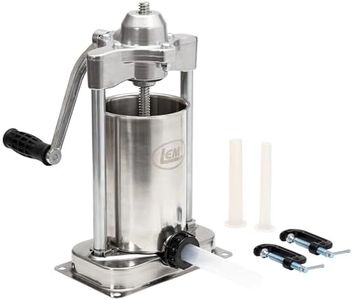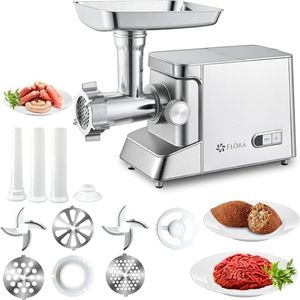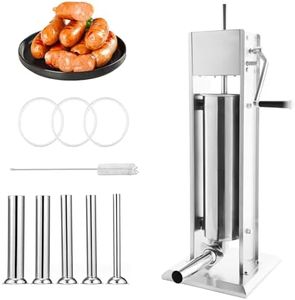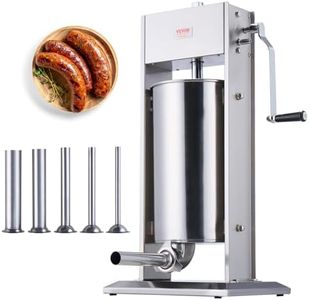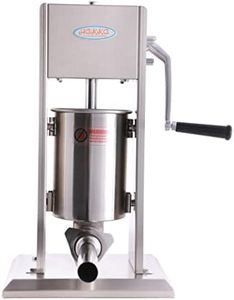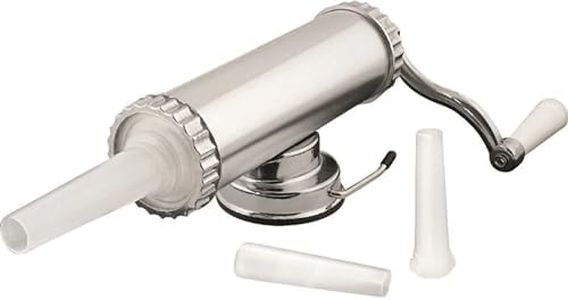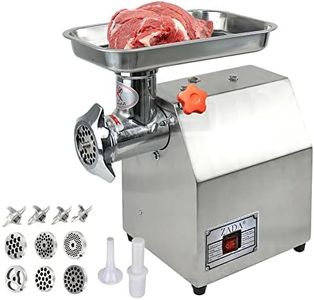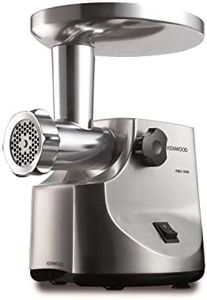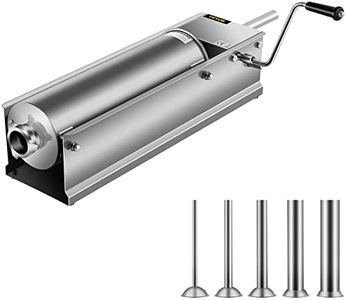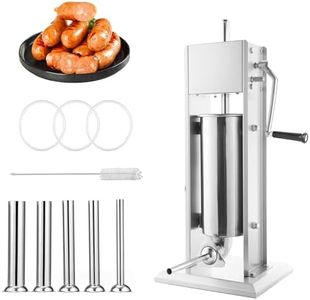We Use CookiesWe use cookies to enhance the security, performance,
functionality and for analytical and promotional activities. By continuing to browse this site you
are agreeing to our privacy policy
10 Best Sausage Makers
From leading brands and best sellers available on the web.Buying Guide for the Best Sausage Makers
When shopping for a sausage maker, it’s important to match your choice with how frequently you’ll use it and what kind of sausages you want to make. Sausage makers can vary a lot in size, ease of use, and the results they provide, so thinking about your cooking habits and preferences will help you pick the best one. Consider how many sausages you typically want to make at once, whether you prefer hand or electric operation, and how much space you have for storage and cleaning.Type (Manual vs. Electric)Sausage makers generally come in two main types: manual and electric. Manual models require you to turn a crank or handle, which gives you more control but also requires more effort and is ideal for smaller batches. Electric models do the work for you and are better suited for larger batches or frequent use, but tend to be bigger and can be more complicated to clean. If you plan to make sausages occasionally at home, a manual type might suit you best. If you are making sausages regularly or in large quantities, consider an electric one for convenience.
CapacityCapacity refers to how much meat the sausage maker can process or hold at once. Smaller capacity machines (often holding 1-3 pounds of meat) are great for home cooks who only want to make a few sausages at a time. Medium capacity (3-7 pounds) works well for families or small gatherings, while large capacity (over 7 pounds) is best if you often make big batches. Choose a capacity based on how much sausage you want to produce in a single session—the right size will make the process smoother and less work overall.
Build MaterialThe material used in the sausage maker is important for both durability and food safety. Most commonly, sausage makers are built from stainless steel, aluminum, or food-grade plastic. Stainless steel models are the most durable and are easy to clean, making them a popular choice for regular use. Aluminum is lighter but may not last as long. Plastic parts are often found in less expensive models and can be fine for occasional use. If you want a machine that will last and is easy to maintain, look for one made primarily from stainless steel.
Stuffing Tubes/NozzlesStuffing tubes or nozzles determine the size and shape of the sausages you can make. Most machines offer several sizes so you can try making anything from thin breakfast links to thick bratwursts. If you want flexibility, look for models with at least two or three nozzle sizes. Matching the tube size with the type of sausage you want to make will give you the best results.
Ease of CleaningMaking sausages can get messy, so it’s important to consider how easy the machine is to clean. Machines with fewer, simple parts and dishwasher-safe components are much easier to maintain. If you don’t want to spend a lot of time cleaning, look for sausage makers that are designed to be taken apart and put together quickly, and that use materials like stainless steel which tend to be less sticky and easier to wash.
Suction/Clamping MechanismTo ensure smooth operation, especially with manual sausage makers, a stable base is important. Some models use suction cups to stick to countertops, others rely on clamps. Suction bases work best on smooth surfaces, while clamps can be attached to table edges. Choose a model that matches your kitchen setup to avoid slips and spills while stuffing sausages.
